Cape Prud’Homme located at 66°41’28” South, 139°53’44”East is an  Italian-French camp, opened in 1994, managed by the (French Polar Institute Paul-Emile Victor (IPEV) and the Programma Nazionale di Ricerche in Antartide (PNRA). It is located on the coast of the Antarctic Ice sheet, in Adélie Land, about 5 km from Petrel Island, where the French Dumont d’Urville Station is. All the supplies and equipment for the Italian-French Concordia Station (aka Dome C, WAP MNB-Ø3) are transported by a combined convoy of up to 7 Caterpillar tractors from Cap Prud’Homme , with Kassbohrer trailblazers and a team of up to 9 people; each convoy transports an average of 150 tons of payload..
Italian-French camp, opened in 1994, managed by the (French Polar Institute Paul-Emile Victor (IPEV) and the Programma Nazionale di Ricerche in Antartide (PNRA). It is located on the coast of the Antarctic Ice sheet, in Adélie Land, about 5 km from Petrel Island, where the French Dumont d’Urville Station is. All the supplies and equipment for the Italian-French Concordia Station (aka Dome C, WAP MNB-Ø3) are transported by a combined convoy of up to 7 Caterpillar tractors from Cap Prud’Homme , with Kassbohrer trailblazers and a team of up to 9 people; each convoy transports an average of 150 tons of payload..
There is no ice free area around the station as well as there is no protected area in the immediate vicinity. The station is built on a rock near the coast but its surroundings are entirely covered by ice or snow. No signs of fauna or flora.
The joint French-Italian station Cape Prud’homme (WAP MNB-NEW) forms an integral part of the Concordia project. It offers a gateway to Concordia for the transport of heavy tools and equipment, following delivery by the resupply vessel L’Astrolabe to Dumont d’Urville Station (WAP FRA-Ø1). In this context, and because Dumont d’Urville station is not on the continent itself, Cape Prud’homme was established for the development and maintenance of the traverse equipment (tractors, trailers, accommodation caravans), its winter storage, and preparation of transport convoys. The site was selected because it was used from 1955 as Antarctica Gateway for French expeditions.
The station is open in summer only. The staff is mainly composed of technicians working on the maintenance of the traverse equipment, as well as drivers in charge of the 3 convoys per year.

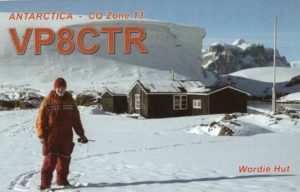
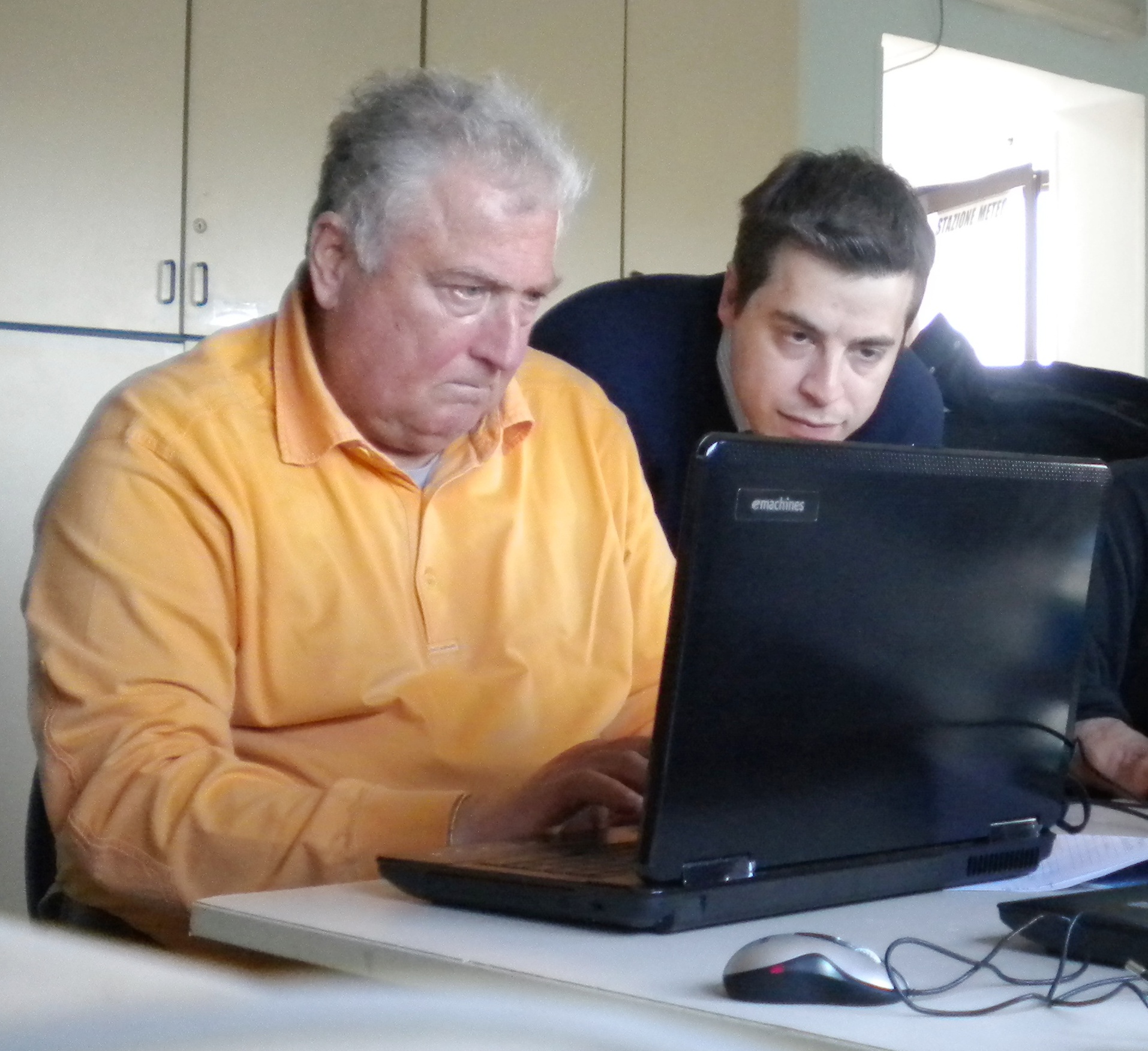 Thanks to Gianluigi IZ8EWB, a young engineer who have carried on hours and hours of work, WAP website is again online.
Thanks to Gianluigi IZ8EWB, a young engineer who have carried on hours and hours of work, WAP website is again online. Hams from Italy and few coming from neighboring European Countries have joined the 18th DCI Meeting (Italian Castles), IFFA (Flora and Fauna) and 16th Worldwide Antarctic Program (WAP).
Hams from Italy and few coming from neighboring European Countries have joined the 18th DCI Meeting (Italian Castles), IFFA (Flora and Fauna) and 16th Worldwide Antarctic Program (WAP).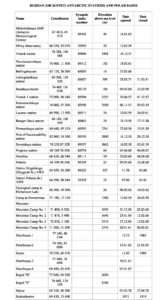 The first plans for a Soviet Antarctic expedition were drawn up just before the second International Polar Year (1932-1933), but the expedition never took place. Soviet Antarctic expeditions began general, comprehensive scientific research covering the southern oceans as well as the Antarctic mainland in 1956, when preparations were begun for International Geophysical Year (IGY).
The first plans for a Soviet Antarctic expedition were drawn up just before the second International Polar Year (1932-1933), but the expedition never took place. Soviet Antarctic expeditions began general, comprehensive scientific research covering the southern oceans as well as the Antarctic mainland in 1956, when preparations were begun for International Geophysical Year (IGY).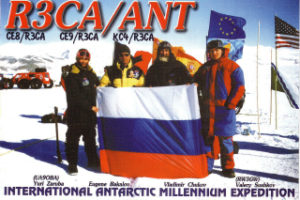
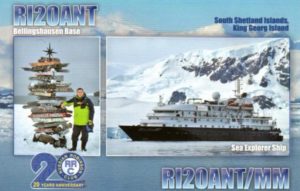 We would like to remark that Russia is probably the solo Country that have always been “On the Air” since the Antarctic epic, with hundreds of very professional Radio operators that, still now are very active on HF Hams bands. Our appreciation to the constancy and tenacity of all Russian radio amateurs who are an example of professionalism!
We would like to remark that Russia is probably the solo Country that have always been “On the Air” since the Antarctic epic, with hundreds of very professional Radio operators that, still now are very active on HF Hams bands. Our appreciation to the constancy and tenacity of all Russian radio amateurs who are an example of professionalism! It was on 20 November 1984 that China dispatched its first Antarctic research expedition team, and by the end of this expedition, the country established its first Antarctic research station, the Great Wall Station on 20 February 1985. So far, China has done 35 national Antarctic expeditions and established two year-round research stations, namely the Great Wall Station (1985) in West Antarctica and the Zhongshan Station (1989) located in the Larsemann Hills, East Antarctica; one inner land summer station, the Kunlun Station (2009) located on “Dome A”, the highest place in Antarctica and one camp, namely the Taishan Camp (2014) located in Princess Elizabeth Land.
It was on 20 November 1984 that China dispatched its first Antarctic research expedition team, and by the end of this expedition, the country established its first Antarctic research station, the Great Wall Station on 20 February 1985. So far, China has done 35 national Antarctic expeditions and established two year-round research stations, namely the Great Wall Station (1985) in West Antarctica and the Zhongshan Station (1989) located in the Larsemann Hills, East Antarctica; one inner land summer station, the Kunlun Station (2009) located on “Dome A”, the highest place in Antarctica and one camp, namely the Taishan Camp (2014) located in Princess Elizabeth Land. Comprehensive Investigation and Assessment Programs” (2015-2020). Regarding Antarctica, the Program comprises three parts: the Antarctic Marine Environment Survey, the Antarctic Terrestrial Environment Survey and the Comprehensive Assessment of the Antarctic Environment. The program is implemented through a series of surveys and assessments, involving various disciplines. In addition, China continues to conduct routine observations at the Great Wall Station (WAP CHN-Ø1)and the Zhongshan Station (WAP CHN-Ø2). To strengthen international cooperation in Antarctic research, international participants are encouraged to join in the Program through collaboration with national institutes and universities. Notably, China has been preparing to launch its fifth Antarctic research station, which is expected to be finalized by 2022.
Comprehensive Investigation and Assessment Programs” (2015-2020). Regarding Antarctica, the Program comprises three parts: the Antarctic Marine Environment Survey, the Antarctic Terrestrial Environment Survey and the Comprehensive Assessment of the Antarctic Environment. The program is implemented through a series of surveys and assessments, involving various disciplines. In addition, China continues to conduct routine observations at the Great Wall Station (WAP CHN-Ø1)and the Zhongshan Station (WAP CHN-Ø2). To strengthen international cooperation in Antarctic research, international participants are encouraged to join in the Program through collaboration with national institutes and universities. Notably, China has been preparing to launch its fifth Antarctic research station, which is expected to be finalized by 2022.

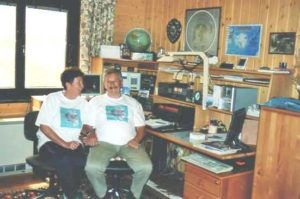 Gus Smitka OE3SGA is a real Old Timer and for long time a keen DXer and Antarctic Hunter.
Gus Smitka OE3SGA is a real Old Timer and for long time a keen DXer and Antarctic Hunter.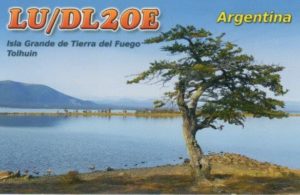
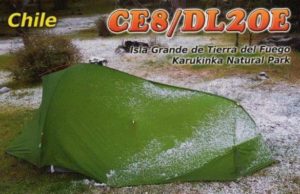
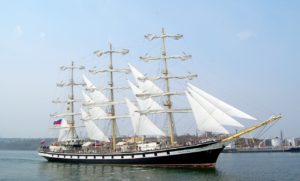 In effect, 2020 marks the 200th anniversary of the discovery of Antarctica by the expedition led by Fabian Bellingshausen and Mikhail Lazarev. In honor of this event, plans are underway for the round-the-world sailing of the tall ships Pallada (
In effect, 2020 marks the 200th anniversary of the discovery of Antarctica by the expedition led by Fabian Bellingshausen and Mikhail Lazarev. In honor of this event, plans are underway for the round-the-world sailing of the tall ships Pallada (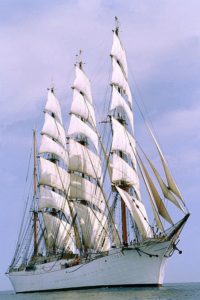 , the Vostok, commanded by Fabian Bellingshausen, and the Mirny, commanded by Mikhail Lazarev, left Kronstadt in 1819 and discovered Antarctica on 28 January 1820. In 1821, the ships returned to Kronstadt. They stayed at sea for 751 days and covered over 92,000 km. In addition to Antarctica, the expedition discovered 29 islands and one coral reef. The Russian sailors conducted scientific research, including oceanographic research.
, the Vostok, commanded by Fabian Bellingshausen, and the Mirny, commanded by Mikhail Lazarev, left Kronstadt in 1819 and discovered Antarctica on 28 January 1820. In 1821, the ships returned to Kronstadt. They stayed at sea for 751 days and covered over 92,000 km. In addition to Antarctica, the expedition discovered 29 islands and one coral reef. The Russian sailors conducted scientific research, including oceanographic research.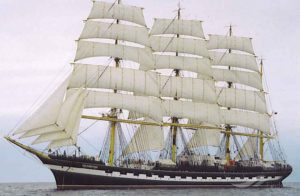
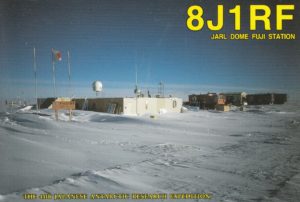 Dome-Fuji Station, 77°30’South, 37°30’East was established in January, 1995 to conduct deep ice-core drilling at the highest dome of Dronning Maud Land, some 1000 km away from Syowa Station. After completing 3035 m deep drilling, the station is being closed temporarily.
Dome-Fuji Station, 77°30’South, 37°30’East was established in January, 1995 to conduct deep ice-core drilling at the highest dome of Dronning Maud Land, some 1000 km away from Syowa Station. After completing 3035 m deep drilling, the station is being closed temporarily.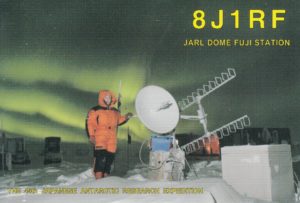
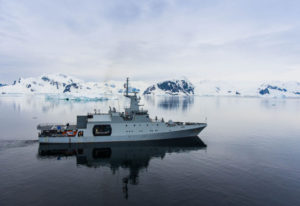 Colombia plans to set up its base at a point along the Gerlache Strait, a body of water 100 miles long and 20 miles wide that separates the Palmer Archipelago from the Danco Coast on the western side of the Antarctic Peninsula.
Colombia plans to set up its base at a point along the Gerlache Strait, a body of water 100 miles long and 20 miles wide that separates the Palmer Archipelago from the Danco Coast on the western side of the Antarctic Peninsula.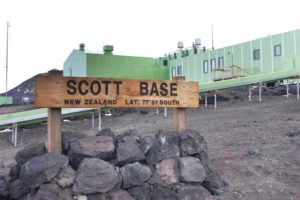 During this Antarctic Winter Season there are at least 4 Stations active:
During this Antarctic Winter Season there are at least 4 Stations active: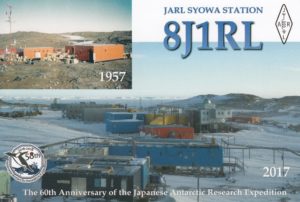
 A “Church in Antarctica” as well as any other signs or place of worship in any corners of the Icy Continent are the most sincere examples of faith and genuine places of worship; they deserve to be known.
A “Church in Antarctica” as well as any other signs or place of worship in any corners of the Icy Continent are the most sincere examples of faith and genuine places of worship; they deserve to be known. facing the Station buildings. A second bigger one, is sets little lower. Both statues are located in the great rock on which the lighthouse stands out (62°09′28″South 58°27′56″West), and people at Arctowski, call this corner “Chapel”.
facing the Station buildings. A second bigger one, is sets little lower. Both statues are located in the great rock on which the lighthouse stands out (62°09′28″South 58°27′56″West), and people at Arctowski, call this corner “Chapel”. No way to put a statue on cargo ship that brought the supplies to Arctowski. The workers hid the statue of the Virgin in a deep cargo box and smuggled it out of Polish border. Now both signs of devotion are proudly on the site that Polish staff did choose for them.
No way to put a statue on cargo ship that brought the supplies to Arctowski. The workers hid the statue of the Virgin in a deep cargo box and smuggled it out of Polish border. Now both signs of devotion are proudly on the site that Polish staff did choose for them. Norbert Maibaum (DL SWL), from Bonn, Germany is a very active Antarctic Chaser.
Norbert Maibaum (DL SWL), from Bonn, Germany is a very active Antarctic Chaser.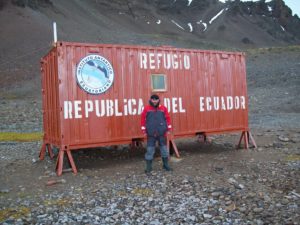 Republica del Ecuador it’s an Antarctic Refuge located at Hennequin Point, 62°07’16” South, 58°23’42” West inside the Admiralty Bay on King George Island (or 25 de Mayo Island). It was installed by the first Antarctic expedition of Ecuador and inaugurated on January 13, 1988 with the assistance of delegations from Germany, Argentina, Brazil, Chile, United States, Poland, Russia and Uruguay, which have Bases, scientific stations and shelters in the island. Its first occupants were Ecuadorian scientists who performed hydrographic and geological works. Republica del Ecuador Refuge consists of a six-meter container that has basic medical supplies, non-perishable food and two bunk beds with a capacity for four people. It is for researchers and tourists who want to rest or study the area.
Republica del Ecuador it’s an Antarctic Refuge located at Hennequin Point, 62°07’16” South, 58°23’42” West inside the Admiralty Bay on King George Island (or 25 de Mayo Island). It was installed by the first Antarctic expedition of Ecuador and inaugurated on January 13, 1988 with the assistance of delegations from Germany, Argentina, Brazil, Chile, United States, Poland, Russia and Uruguay, which have Bases, scientific stations and shelters in the island. Its first occupants were Ecuadorian scientists who performed hydrographic and geological works. Republica del Ecuador Refuge consists of a six-meter container that has basic medical supplies, non-perishable food and two bunk beds with a capacity for four people. It is for researchers and tourists who want to rest or study the area.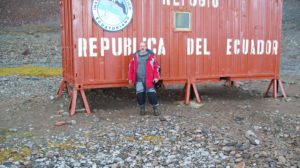 stop on Republica del Ecuador Refuge on Febr.22, 2009 just before landing on Macchu Pichu Base (WAP PER-Ø1).
stop on Republica del Ecuador Refuge on Febr.22, 2009 just before landing on Macchu Pichu Base (WAP PER-Ø1).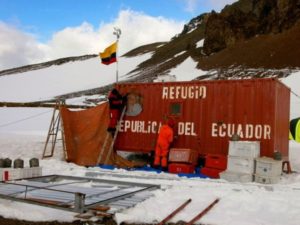 INOCAR (Oceanographic Institute of the Navy), performed the integral maintenance of the Refuge including graffiti, repair of walls, ceiling and floor.(pic on the right)
INOCAR (Oceanographic Institute of the Navy), performed the integral maintenance of the Refuge including graffiti, repair of walls, ceiling and floor.(pic on the right)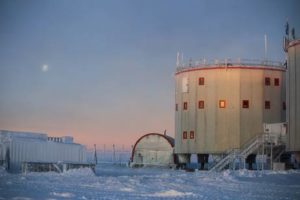 “Sun or not, the view is magical”.
“Sun or not, the view is magical”.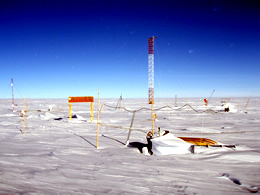 Mizuho Station 70°41’58’’South, 44°16’52’’East was established as a summer Base in July, 1970 on the Mizuho Plateau, 2230 mts above sea level, 270 km south-east of Syowa Station (WAP JPN-Ø3). Mizuho Station (WAP JPN-Ø2) in one of the fourth Japanese scientific installations in Antarctica.
Mizuho Station 70°41’58’’South, 44°16’52’’East was established as a summer Base in July, 1970 on the Mizuho Plateau, 2230 mts above sea level, 270 km south-east of Syowa Station (WAP JPN-Ø3). Mizuho Station (WAP JPN-Ø2) in one of the fourth Japanese scientific installations in Antarctica.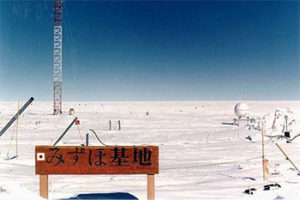 occupied for meteorological and glaciological observations.
occupied for meteorological and glaciological observations.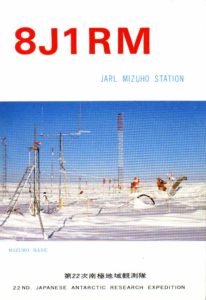
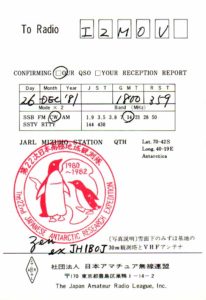
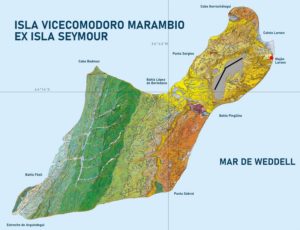 Larsen cairn, 64°14’13” South and 56° 35′ 7″ West, is located 2 kilometers from the facilities of Marambio Base (WAP ARG-21)direction E-N-E (76˚) and 230 meters to the S-E-S of the Chavez lighthouse, 40 meters above sea level and 70 meters from the coast.
Larsen cairn, 64°14’13” South and 56° 35′ 7″ West, is located 2 kilometers from the facilities of Marambio Base (WAP ARG-21)direction E-N-E (76˚) and 230 meters to the S-E-S of the Chavez lighthouse, 40 meters above sea level and 70 meters from the coast.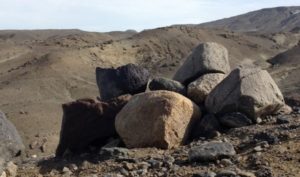
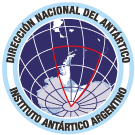 For this reason, the footprints of the first Antarctic pioneers have an extraordinary heritage value for all mankind. The historical sites of the sixth continent are so scarce, that, in all its extension, including the surrounding islands, we find less than one hundred of them, however, a new site has been added to that select list thanks to the work promoted by the Argentine Antarctic Program, promoted by the National Antarctic Directorate (DNA), through the Argentine Antarctic Institute (IAA).
For this reason, the footprints of the first Antarctic pioneers have an extraordinary heritage value for all mankind. The historical sites of the sixth continent are so scarce, that, in all its extension, including the surrounding islands, we find less than one hundred of them, however, a new site has been added to that select list thanks to the work promoted by the Argentine Antarctic Program, promoted by the National Antarctic Directorate (DNA), through the Argentine Antarctic Institute (IAA).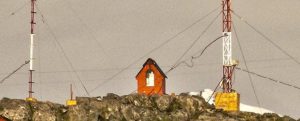 The “Capilla Cristo Caminante”, is located up in the hill behind San Martin Station (WAP ARG-Ø8). The pics aside show the closest shots of the Chapel of which, so far we do not have better visualizing.
The “Capilla Cristo Caminante”, is located up in the hill behind San Martin Station (WAP ARG-Ø8). The pics aside show the closest shots of the Chapel of which, so far we do not have better visualizing.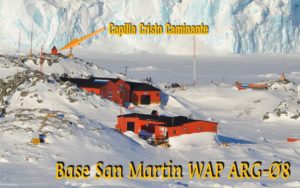

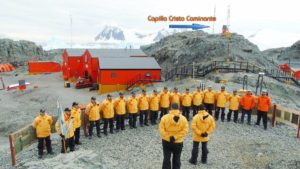
 Mr. Fabricio Tavares from Brazil, is the responsible of a Twitter account which loads so many useful Antarctic information; he wrote: – Congratulations for the important job WAP website accomplishes! Feel free to use any info WAP may wants from my Twitter account-.
Mr. Fabricio Tavares from Brazil, is the responsible of a Twitter account which loads so many useful Antarctic information; he wrote: – Congratulations for the important job WAP website accomplishes! Feel free to use any info WAP may wants from my Twitter account-.

 Amateur Radio Circle of the Army Telecommunications School, set a test in the field, to evaluate response capabilities in case of Emergency. They did install stations Emergency communications and test transmissions in HF, VHF, UHF with its repeaters and Digital voice systems in DMR, managing to communicate with more than a hundred stations.
Amateur Radio Circle of the Army Telecommunications School, set a test in the field, to evaluate response capabilities in case of Emergency. They did install stations Emergency communications and test transmissions in HF, VHF, UHF with its repeaters and Digital voice systems in DMR, managing to communicate with more than a hundred stations.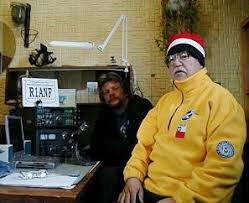 d; nevertheless the emergency practice can be exported in Antarctica as well where the situation is sometimes worse than in the Continent!
d; nevertheless the emergency practice can be exported in Antarctica as well where the situation is sometimes worse than in the Continent! A cooperation agreement between the Portuguese Polar Program (PROPOLAR) and the Bulgarian Antarctic Institute has been signed at the University of Lisbon. The occasion was the tenth anniversary of the start of Bulgarian-Portuguese studies in Antarctica and the establishment of Portugal’s National Polar Program.
A cooperation agreement between the Portuguese Polar Program (PROPOLAR) and the Bulgarian Antarctic Institute has been signed at the University of Lisbon. The occasion was the tenth anniversary of the start of Bulgarian-Portuguese studies in Antarctica and the establishment of Portugal’s National Polar Program.
 WAP is looking for some pics of Refugio Cabo Gutierrez Vargas (WAP CHL-NEW) which is located 1Km close to the Presidente Aguirre Cerda Base (WAP CHL-Ø4). On several websites it is reported that ruins of the Refuge are still in place. On last 2011, Mehdi F5PFP was very close to it, when he did activate Presidente Aguirre Cerda Base (CE9XX, see QSL on the side); Mehdi reports to have seen the remaining of this Refuge but he did not take direct picture of it!
WAP is looking for some pics of Refugio Cabo Gutierrez Vargas (WAP CHL-NEW) which is located 1Km close to the Presidente Aguirre Cerda Base (WAP CHL-Ø4). On several websites it is reported that ruins of the Refuge are still in place. On last 2011, Mehdi F5PFP was very close to it, when he did activate Presidente Aguirre Cerda Base (CE9XX, see QSL on the side); Mehdi reports to have seen the remaining of this Refuge but he did not take direct picture of it!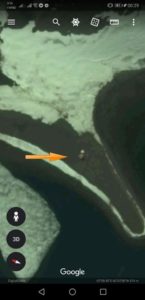 Refugio Cabo Gutierrez Vargas so called in memory of the aviation Captain who died on December 30, 1955, was located at 1 kilometer (0.62 mi) from Aguirre Cerda Station and was inaugurated on February 12, 1956. Its purpose was to serve as a Refuge for the members of the Station in case of fire.
Refugio Cabo Gutierrez Vargas so called in memory of the aviation Captain who died on December 30, 1955, was located at 1 kilometer (0.62 mi) from Aguirre Cerda Station and was inaugurated on February 12, 1956. Its purpose was to serve as a Refuge for the members of the Station in case of fire.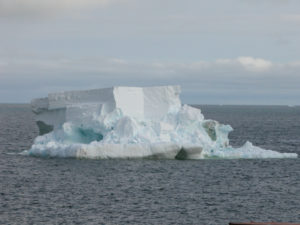 Mobile networks have been assisting scientists with Antarctic research.
Mobile networks have been assisting scientists with Antarctic research.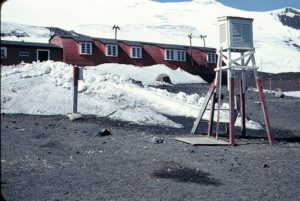 In 1955 Chile inaugurated its station Pedro Aguirre Cerda at Pendulum Cove (62°56 South, 60°36 West), to increase the Chilean presence in the sector claimed by that nation.
In 1955 Chile inaugurated its station Pedro Aguirre Cerda at Pendulum Cove (62°56 South, 60°36 West), to increase the Chilean presence in the sector claimed by that nation.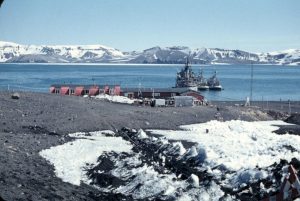 In 1969, a violent volcanic eruption demolished the Chilean stations Pedro Aguirre Cerda and Gutierrez Vargas Refuge. Remains at Whalers Bay include rusting boilers and tanks, an aircraft hangar and the British scientific station house (Biscoe House), with the middle torn out by the 1969 mudflows. A bright orange derelict airplane fuselage was removed in 2004. Deception Island has become a popular tourist stop in Antarctica because of its several colonies of chinstrap penguins, as well as the novel possibility of making a warm bath by digging into the sands of the beach.
In 1969, a violent volcanic eruption demolished the Chilean stations Pedro Aguirre Cerda and Gutierrez Vargas Refuge. Remains at Whalers Bay include rusting boilers and tanks, an aircraft hangar and the British scientific station house (Biscoe House), with the middle torn out by the 1969 mudflows. A bright orange derelict airplane fuselage was removed in 2004. Deception Island has become a popular tourist stop in Antarctica because of its several colonies of chinstrap penguins, as well as the novel possibility of making a warm bath by digging into the sands of the beach.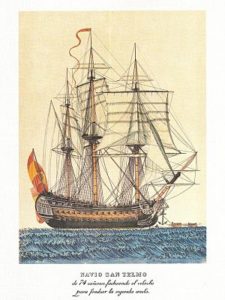 In 1819, the Sailing Vessel San Telmo, commanded by Captain Joaquín de Toledo y Parra, was the flagship of a Spanish naval squadron under Brigadier Rosendo Porlier y Asteguieta bound for Callao (Peru) to reinforce colonial forces there fighting the independence movements in Spanish America. Damaged by severe weather in the Drake Passage, south of Cape Horn, it sank in September 1819.
In 1819, the Sailing Vessel San Telmo, commanded by Captain Joaquín de Toledo y Parra, was the flagship of a Spanish naval squadron under Brigadier Rosendo Porlier y Asteguieta bound for Callao (Peru) to reinforce colonial forces there fighting the independence movements in Spanish America. Damaged by severe weather in the Drake Passage, south of Cape Horn, it sank in September 1819.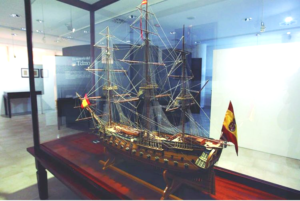 an Telmo Island off the north coast of Livingston Island is named after the ship.
an Telmo Island off the north coast of Livingston Island is named after the ship.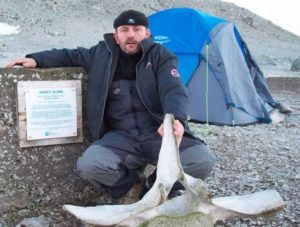 On WAP website, we have recently add a new page called “Arctic & Antarctic Global Program”, a French proposal for Hams, launched years ago by F
On WAP website, we have recently add a new page called “Arctic & Antarctic Global Program”, a French proposal for Hams, launched years ago by F , Port Mikkelsen bay, Trinity Island, one of the Palmer archipelago. It was inaugurated by the Argentine Navy on December 10th , 1954. Its original name was Port Mikkelsen Refuge.
, Port Mikkelsen bay, Trinity Island, one of the Palmer archipelago. It was inaugurated by the Argentine Navy on December 10th , 1954. Its original name was Port Mikkelsen Refuge.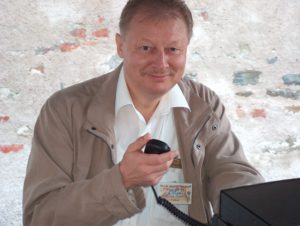 Volker Strecke, DL8JDX (pic taside) informs that next 14th November 2019 in Dresden, Germany there will be an Antarctic Meeting of many Polar Veterans on the occasion of 30th Anniversary of the border opening between former East and West Germany and the later reunification as well as the related impressions from that time at Georg Forster (WAP DDR-Ø1)and Neumayer II (WAP DEU-Ø2) Stations.
Volker Strecke, DL8JDX (pic taside) informs that next 14th November 2019 in Dresden, Germany there will be an Antarctic Meeting of many Polar Veterans on the occasion of 30th Anniversary of the border opening between former East and West Germany and the later reunification as well as the related impressions from that time at Georg Forster (WAP DDR-Ø1)and Neumayer II (WAP DEU-Ø2) Stations.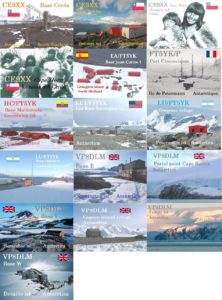
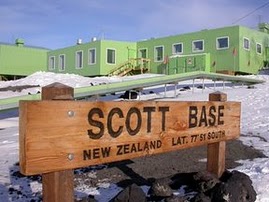 Scott Base (WAP NZL-Ø1) is getting old. Antarctica NZ wants a complete replacement; to dom that plan, Antarctica New Zealand must raise $50 million in charitable donations as part of its $250m Scott Base rebuild.
Scott Base (WAP NZL-Ø1) is getting old. Antarctica NZ wants a complete replacement; to dom that plan, Antarctica New Zealand must raise $50 million in charitable donations as part of its $250m Scott Base rebuild.
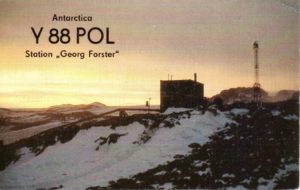 Never too late … Let’s once again join the guys in Antarctica in the celebration of Mid Winter!
Never too late … Let’s once again join the guys in Antarctica in the celebration of Mid Winter!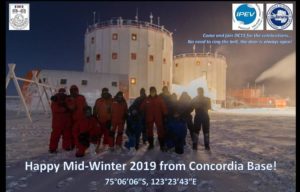 (
(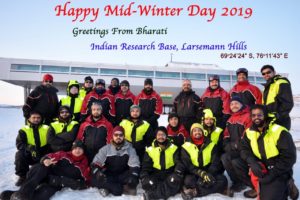
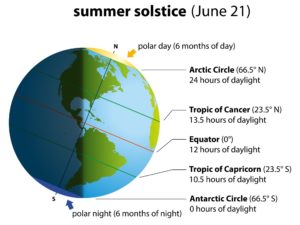 June 21, in the northern hemisphere the sun will rise at 5.36 and set at 8.51, remaining in the sky for 15 hours and 15 minutes, while between the Arctic Circle and the North Pole it will not fade at all. The Northern hemisphere will live the longest day of the year.
June 21, in the northern hemisphere the sun will rise at 5.36 and set at 8.51, remaining in the sky for 15 hours and 15 minutes, while between the Arctic Circle and the North Pole it will not fade at all. The Northern hemisphere will live the longest day of the year. Professional news media invited to apply to visit jointly funded US and UK research on Antarctic Thwaites Glacier.The National Science Foundation (NSF) and the International Thwaites Glacier Collaboration (ITGC) are accepting written proposals from media professionals to visit a “deep-field” camp on the remote Thwaites Glacier in West Antarctica in December.
Professional news media invited to apply to visit jointly funded US and UK research on Antarctic Thwaites Glacier.The National Science Foundation (NSF) and the International Thwaites Glacier Collaboration (ITGC) are accepting written proposals from media professionals to visit a “deep-field” camp on the remote Thwaites Glacier in West Antarctica in December.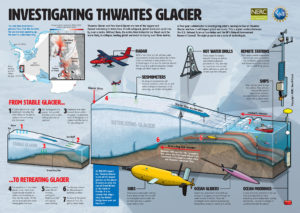 Media will be free to interview Thwaites research teams as they deploy through that camp. A visit to an additional Thwaites Glacier field camp will be highly dependent on weather and logistical variables, and, while possible, cannot be guaranteed.
Media will be free to interview Thwaites research teams as they deploy through that camp. A visit to an additional Thwaites Glacier field camp will be highly dependent on weather and logistical variables, and, while possible, cannot be guaranteed. Located at 74°20’South, 165°08’ East, Edmonson Point is a rounded, largely ice-free point lying below Mount Melbourne along the west side of Wood bay, Victoria land.
Located at 74°20’South, 165°08’ East, Edmonson Point is a rounded, largely ice-free point lying below Mount Melbourne along the west side of Wood bay, Victoria land.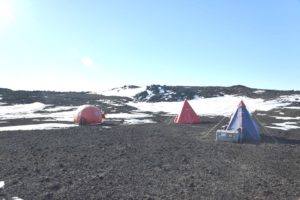 uins and south polar skuas. The site contains a diverse range of freshwater habitats ,terrestrial vegetation and invertebrates are abundant. Weddell seals breed on the adjacent sea ice.
uins and south polar skuas. The site contains a diverse range of freshwater habitats ,terrestrial vegetation and invertebrates are abundant. Weddell seals breed on the adjacent sea ice.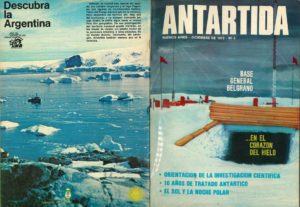 An old collection of Magazines (
An old collection of Magazines (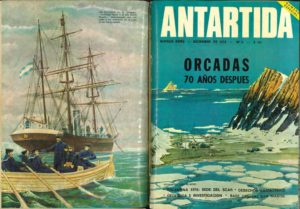 Argentina reaffirms sovereignty over the Argentine Antarctic Sector extending between the 25th and 74th meridians of west longitude, south of the 60th parallel of south latitude.
Argentina reaffirms sovereignty over the Argentine Antarctic Sector extending between the 25th and 74th meridians of west longitude, south of the 60th parallel of south latitude.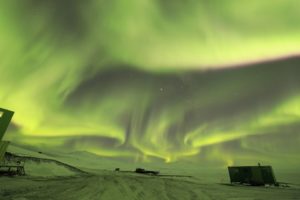 Ross Island turned green in the weekend! This epic shot of an Aurora Australis captured by the winter Leader Jonny Harrison.
Ross Island turned green in the weekend! This epic shot of an Aurora Australis captured by the winter Leader Jonny Harrison.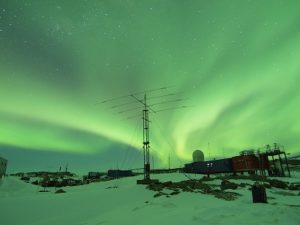 http://www.antarcticanz.govt.nz/scott-base/
http://www.antarcticanz.govt.nz/scott-base/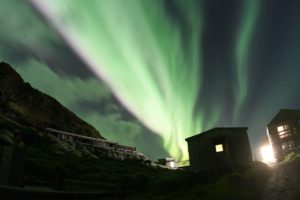
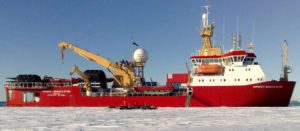 Now the news is official: Icebreaker “Laura Bassi”, former “Ernest Shackleton” of the British Antarctic Survey, is the new OGS ship that will work for PNRA to replace the glorious Italica!
Now the news is official: Icebreaker “Laura Bassi”, former “Ernest Shackleton” of the British Antarctic Survey, is the new OGS ship that will work for PNRA to replace the glorious Italica!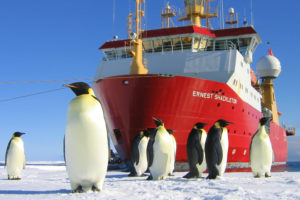
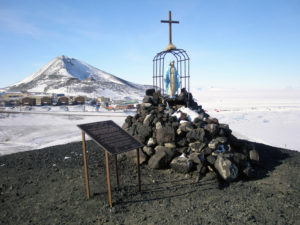 The Our Lady of the Snows shrine is one of the many memorials atop hills along McMurdo Sound to men who lost their lives in Antarctica; this one is farther up the trail from Hut Point. The Shrine is dedicated to Richard T. Williams, US Navy – Seabees, who lost his life at McMurdo Sound on January 6, 1956 during initial construction of McMurdo Station.
The Our Lady of the Snows shrine is one of the many memorials atop hills along McMurdo Sound to men who lost their lives in Antarctica; this one is farther up the trail from Hut Point. The Shrine is dedicated to Richard T. Williams, US Navy – Seabees, who lost his life at McMurdo Sound on January 6, 1956 during initial construction of McMurdo Station.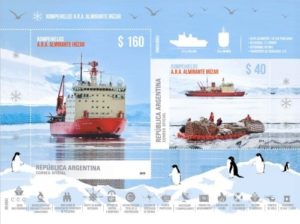 Stamps issued by the Argentine Post Office whose vignettes have designs related with the thematic of the Argentine Antarctic and the Malvinas Islands are always a source of great interest, whether it is a commemoration of special events, expeditions, scientific activities, Antarctic bases, Argentine ships that sail in the Antarctic waters.
Stamps issued by the Argentine Post Office whose vignettes have designs related with the thematic of the Argentine Antarctic and the Malvinas Islands are always a source of great interest, whether it is a commemoration of special events, expeditions, scientific activities, Antarctic bases, Argentine ships that sail in the Antarctic waters.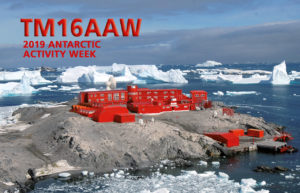 Last Antarctic Activity Week (Febr.2019) has seen a great participation of Hams from several countries WW. Since 16 years, François F8DVD, one of the most active Antarctic enthusiasts, takes part in the event with a special callsign as usual.
Last Antarctic Activity Week (Febr.2019) has seen a great participation of Hams from several countries WW. Since 16 years, François F8DVD, one of the most active Antarctic enthusiasts, takes part in the event with a special callsign as usual. Europe’s dedicated polar-monitoring satellite has produced its sharpest view yet of the shape of Antarctica.
Europe’s dedicated polar-monitoring satellite has produced its sharpest view yet of the shape of Antarctica. all. “So, the benefit in the Antarctic Peninsula for example promises to be massive,” says Dr Noel Gourmelen from Edinburgh University and the UK Centre for Polar Observation and Modelling (CPOM).
all. “So, the benefit in the Antarctic Peninsula for example promises to be massive,” says Dr Noel Gourmelen from Edinburgh University and the UK Centre for Polar Observation and Modelling (CPOM).